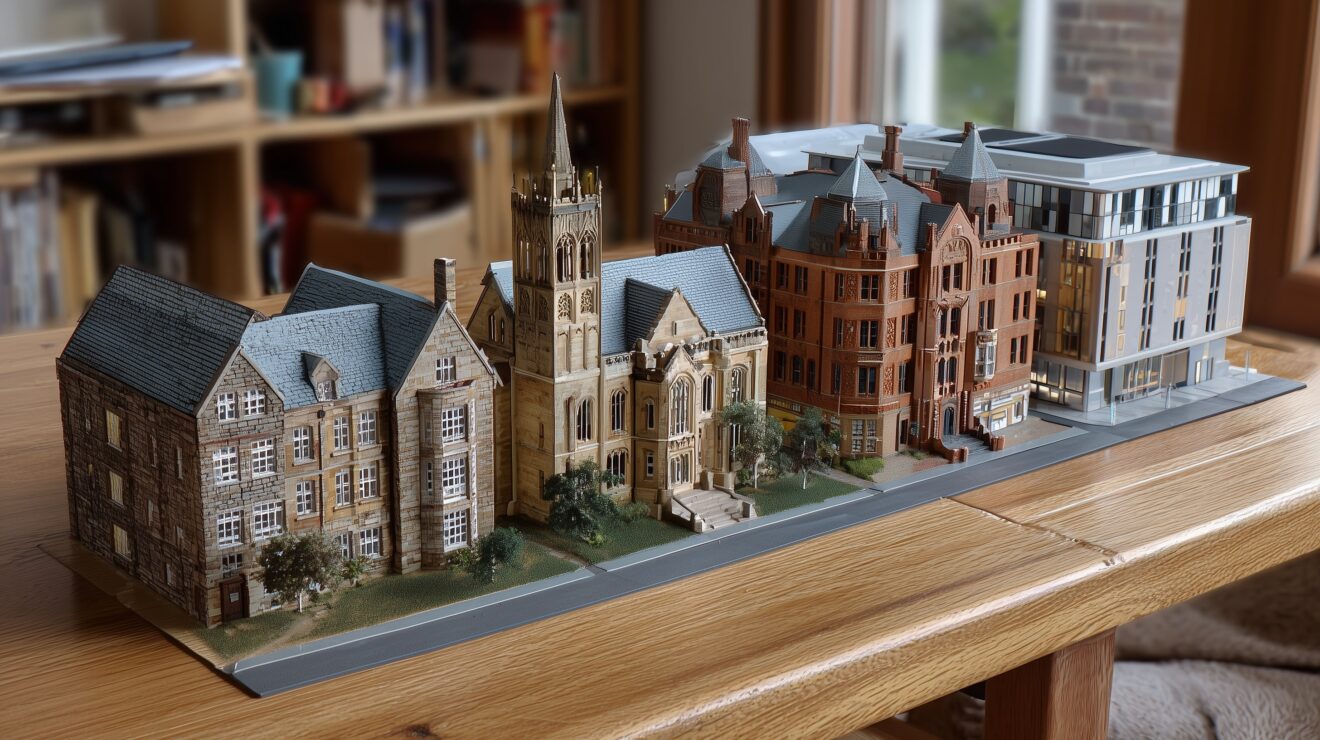The impact of higher education built environments on students’ learning experience has long been observed – but remains largely understudied.
There has been an increasing focus on student outcomes in UK higher education, with much effort being placed on improving student satisfaction, retention, and attainment. So far, most efforts to improve student outcomes have targeted the social and curricular aspects of higher education programmes, leaving the impact of campus and living spaces unexplored.
Together with the research team at the University of the West of England (UWE) I’ve led a systematic literature review for a consortium including HEDQF, AUDE and Willmott Dixon, and examined the international evidence on effects of campus spaces and places on student outcomes. This review was conducted as a rapid evidence assessment, using systematic evidence review techniques that included evidence published 2000-2021.
The evidence we found was limited to a largely North American context and based mostly on the experiences of undergraduate students. There were very few studies in a UK context and even fewer that included postgraduate students or staff views. But there are some potentially interesting avenues for future exploration, on three key themes in particular
Informal spaces
There were two types of informal learning spaces we found influenced some aspect of student engagement and/or satisfaction – purpose-built spaces, such as student lounges, and spaces conventionally considered as ancillary, such as open spaces. Several key informal space design and use factors influence engagement, including multi-functionality and flexible possibilities of use, composition (scale, furniture, etc.), proximity (cognitive and geographical) and ambience and comfort (physical, environmental, and social). Informal learning spaces were of particular importance to undergraduates and first-year students in transitioning to university and establishing a sense of belonging. Proximity and connectivity of informal spaces are key to the overall dynamics of how students engage with the campus and interact with one another.
Many recently built higher education buildings in the UK do tend to include social and collaborative learning spaces – often informal and transitionary. While the evidence that we reviewed in our study suggests that the composition, proximity and flexibility of these spaces have an effect on students’ engagement, these effects remain poorly understood.
But what do students and staff see as informal spaces? A typology of higher education informal space use and characterisation of spatial, social, and environmental design features would be helpful to the future design and operation of such spaces. How do students and staff engage and inhabit such spaces, and what are the effects amongst different user groups on learning and teaching behaviours, for instance? How might this differ in different climatic contexts? Or in different seasons – winter and summer? Future studies could address such questions, thereby strengthening some of the evidence we saw.
Green spaces
While it is not surprising that the use and proximity of green spaces have a positive effect on quality of student life, the design and use of green spaces – and what might constitute “greenness” in this context – did vary in the evidence reviewed. It was also suggested that while many universities had a lot of green spaces, lack of awareness and students’ availability to use such spaces prevented many from engaging and benefiting. We found a number of key barriers to the use of green spaces in the first phase of our review: including busyness with academic and extracurricular work, and the frequency of use of green spaces during childhood.
The evidence reviewed also suggested that design features such as the use of water and certain garden designs as well as greater engagement from university estates and management teams to provide particular outdoor activities were found to promote use of green spaces. Future studies could explore in greater detail how different university approaches to maintaining and planning use of green spaces might enable greater engagement and how this in turn could contribute positively to student wellbeing and quality of life.
Living arrangements
In our evidence review, on-campus living (such as halls of residence) was generally beneficial to many aspects of student outcomes. However, empirical research that looks at the specific characteristics of halls of residence on student outcomes is scarce. Living on campus was not in itself found to be the critical factor that contributed to student retention or attainment – instead, proximity of living arrangements (whether on or off campus) to formal and informal learning activities, as well as student demographic characteristics combined with living styles, seemed to contribute most to student outcomes.
Activities on campus, including facilitated interaction, are of particular importance to student success. While living-learning communities are not a common model of higher education study in the UK, studies evidenced in the review found that such arrangements in the USA and Canada contribute to student outcomes the most. In the UK, of course, undergraduate students tend to house-share with peers on the same course or in the same society after their first year at university, so studies on these types of living arrangements may be more pertinent to thinking about the future of UK student residential development, design and operation.
Where next?
There’s scope for future work to develop a much stronger and more robust evidence base on how the higher education built environments support learning and teaching behaviours and culture. Though a focus on student outcomes matters, a broader understanding of how students and others in higher education engage and inhabit spaces within and outside of university settings would enable a rich and important insight into the role spaces play in higher education.
Post occupancy evaluation studies have been used in a range of building types and though these are increasingly popular their methods or findings are rarely publicly available. Knowledge sharing on post and pre occupancy evaluation of higher education settings is critical not only for better understanding how the design and use of spaces has an impact on teaching and learning, but also more widely in reference to other activities including research and collaboration, societal and other engagement, and in universities’ role in decarbonisation.
Further funding for research that enables large scale field studies comparing different higher education climatic, social and spatial settings would be very useful. A debate on the value and impact of different methods employed to understand the effects of design and use of spaces in universities is needed urgently – so far efforts have been fragmented and largely operating in isolation, focusing either on environmental, social, or spatial characteristics. We need a holistic, multidisciplinary and multidimensional perspective that takes on board the complexity and multiplicity of the challenge. The benefits of such work could be seen not only in higher education but also in other sectors, and in schools.
Our likely next stage of research is to focus on the impact of green spaces, and social or informal spaces, on student outcomes. We are keen to maintain academic rigour so that we can be confident in its value to the sector. To this end, we are currently putting together a specification for this phase two and expect to launch in summer 2022.
If you, your university, or your company are interested in being involved – as a researcher, contributor, or as a funding partner – Cora Kwiatkowski (Divisional Director/Head of Universities at Stride Treglown and project manager for this work on behalf of the HEDQF research group) would be very pleased to hear from you.














Proximity to campus living not in University or specialist provider accommodation can be very damaging to both students and the local non-University population, especially with many Hovels of Maximum Occupation (HMO) land-lords seeking the absolute maximum profits. One local to my University, part of an international clan who use the same modus operandi around the world, ensures EVERY student loses their deposit every year, which with the number of HMO’s they operate equates to millions of pounds a year TAX FREE, the stress this causes, both emotional and financial has a huge knock on effect for students who learn about… Read more »
The Learning Landscapes project [https://cpb-eu-w2.wpmucdn.com/blogs.lincoln.ac.uk/dist/3/85/files/2012/05/Learning-Landscapes-in-Higher-Education-2010.pdf] at Lincoln University remains a useful resource, IMO